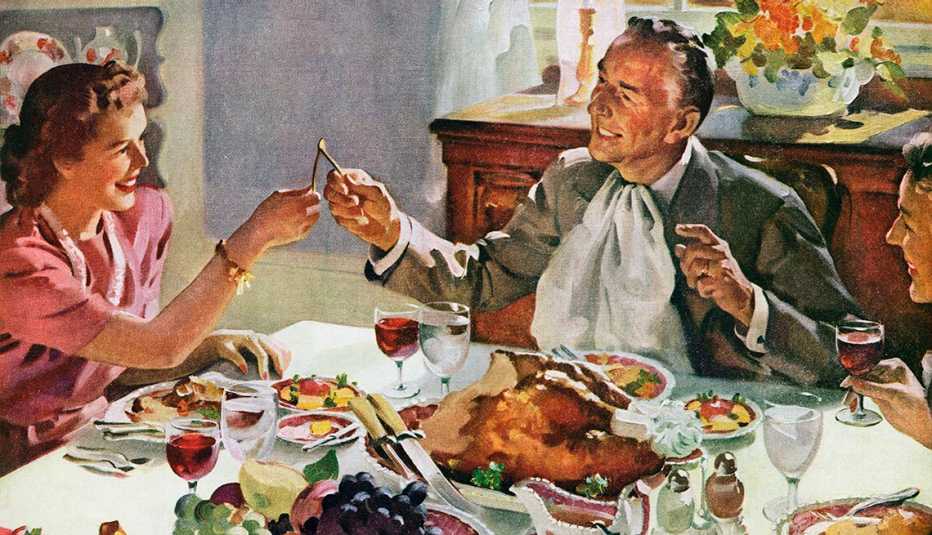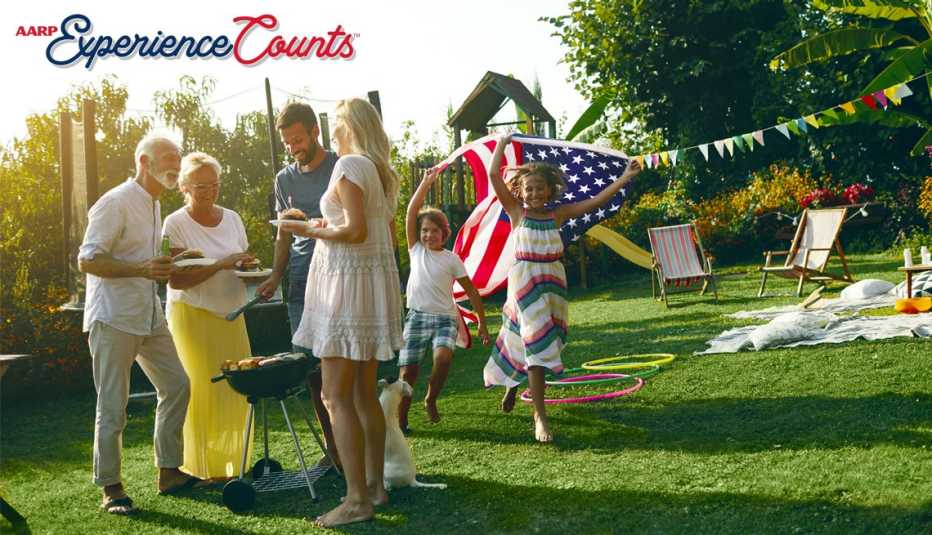AARP Hearing Center


After a huge Thanksgiving meal of roast turkey, cornbread stuffing and pumpkin pie, it’s easy to want to fall straight onto the couch, turn on the TV and watch football. But what if you went for a walk instead?
While it's great to continue old traditions — and many tried-and-true customs are still popular — newer practices are taking root. For instance, turkey isn’t a requirement for the holiday table anymore.
In a 2022 survey conducted for the travel website, The Vacationer, nearly 30 percent of respondents said turkey is their least favorite food on the Thanksgiving table.
Well, guess what? You don’t have to eat it!
Historians aren’t even sure there was turkey at the first Thanksgiving. Some accounts mention that the Native Americans who attended the first Thanksgiving arrived with five deer, which were roasted on a spit and used to make venison stew.
It seems that turkey gained its dominance on the table because it was said to be President Abraham Lincoln’s favorite meal. Prompted by his palate and the musings in Colonial Massachusetts Governor William Bradford’s journal about the “great store of wild turkey” at the early Thanksgiving feast, Lincoln asked for turkey to be served at the first Thanksgiving dinner he hosted after declaring the national holiday in October 1863.


You can subscribe here to AARP Experience Counts, a free e-newsletter published twice a month. If you have feedback or a story idea then please contact us here.
In 1947, it became a tradition to present the president with a turkey on Thanksgiving Day. The president then spared its life with a pardon, meaning the turkey was excused from the meal. So, while venison stew might not be your top choice as the star of the Thanksgiving table, it’s okay to give that spot to ham, roast beef, quail or even vegetables.
As for watching football, that tradition came about in 1876 when the Intercollegiate Football Association began having its championship game on Thanksgiving Day.
In 1920, the National Football League was founded. At the time, there was little interest in professional football (baseball was much more popular), so the league scheduled games on Thanksgiving to draw attention to the sport and bring in new fans. It worked. Today, three NFL games, including one with the Detroit Lions (since 1934) and one with the Dallas Cowboys (since 1966), are broadcast on Thanksgiving. The host team of the third game, added in 2006, changes every year.
Some newer traditions are now common in today’s Thanksgiving holiday celebrations.
Getting outside
If you don’t want to watch football, you can get some exercise after your meal instead. Going for a long walk may make you feel better than a nap on the couch. The fresh air and movement are good for digestion, physical health and mental well-being.



































































More From AARP Experience Counts
Extraordinary Destinations to Witness Civic Pride in Action
Some might say American patriotism is in decline but there are still celebrations going on
Don’t Be Afraid to Be a Good Guy in These States
Good Samaritan laws encourage us to step up when others are in need5 Fall Recipes Grandmas Used to Make—And You Still Can
Pull out those baking pans and soup pots and get ready for seasonal autumn flavors